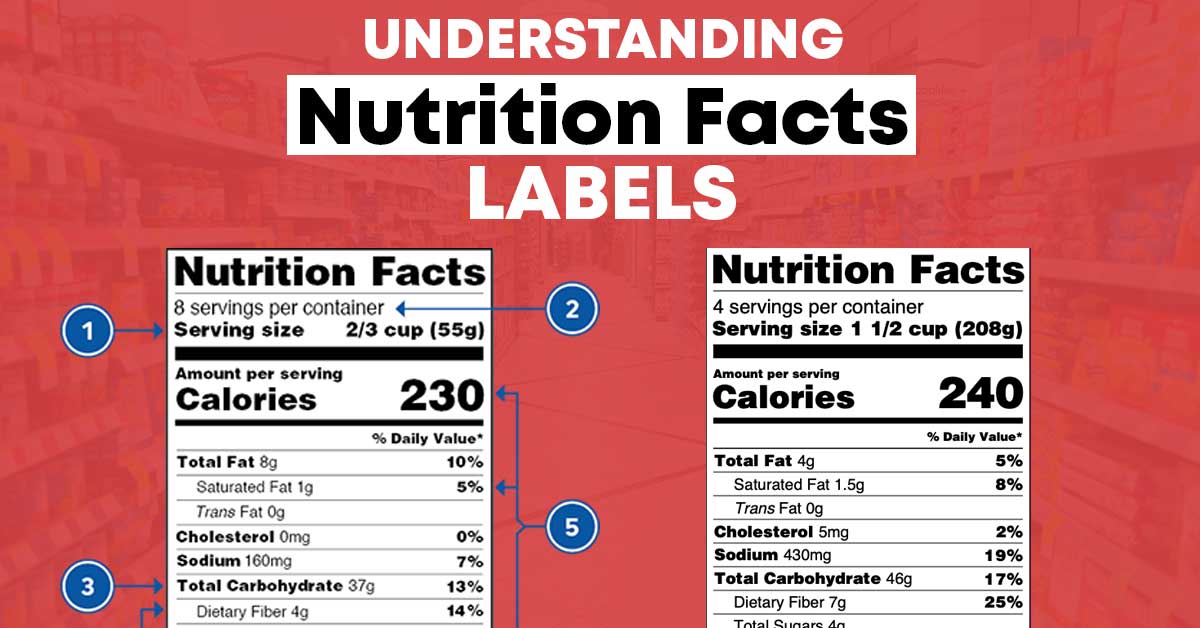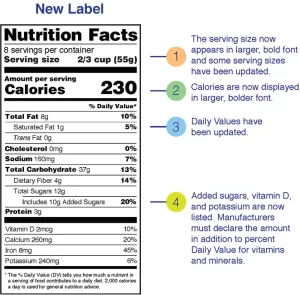At the start of 2020 large food manufacturers were required to have updated nutrition fact labels found on their packages.
With the nutrition label appearing on the packages of most all foods for the last 25 years, there is no doubt Americans are very familiar with the label.
But do you understand how to correctly read the nutrition fact labels? While the calorie line may be in large font to draw attention to it first and foremost, it does not tell the entire story in regard to the food’s nutritional contents.
Serving sizes tell a more complete story
Our eating habits have changed since the labels were first introduced in the 1990s and because of that, serving sizes have been forced to change as well. The new label introduced in 2020 increases the font size of the “serving size” and “servings per container.” Now the serving size is not necessarily the recommended amount, rather it is the Reference Amounts Customarily Consumed (RACCs). This is the amount that people often actually consume – and the calories and other information reflect this. After all, the serving size dictates the quantities and percentages displayed for all other lines on the label.
A good example of a product that has undergone serving size changes over the years is soda. In the past the serving was often 8oz, now you see it listed as 12oz in most cases. While increased serving sizes may give consumers the impression they should eat more than before, the updated calories, sugar, etc. that are printed on the package now offer consumers a better understanding of what they are eating.
Know your sugars
Sugar isn’t exclusively found in soda or sweet treats. There are plenty of cases of natural sugars being found in fruits or other products with natural ingredients. This is why a new aspect of the label includes the addition of “added sugar.” Listing the amount of sugar found in a product is nothing new, but this extra line displays what percentage of that sugar is added and thus not natural.
Our deficiencies have changed
In the past, the inclusion of vitamin A and C information was pushed heavily due to Americans’ deficiencies in these vitamins. These deficiencies are no longer commonplace in America, and thus this information is no longer required on the label. Instead, vitamin D, calcium, iron, and potassium now take more prominent roles with vitamin D, in particular, being a common deficiency.
Looking past the calories
The calorie quantity is now larger and more likely to catch your eye when making a purchasing decision at the grocery store. However, those who want to take a serious look at what they are eating can still check the ingredient list at the bottom of the label. For a good rule of thumb, fewer ingredients are often better and the ingredients listed first make up the largest portion of the food. Ensure the first ingredient is something you think would make sense in the product – like milk appearing first as an ingredient in cheese.
Other common Nutrition Facts to pay attention to
Total Carbohydrates: This section includes dietary fiber and sugars. When comparing two similar products, sugar, like calories, should be a line you examine head to head.
Fats: Keep your saturated fats low, and try to avoid trans fats as much as possible.
“Below the black line” information: After the more consistent information that appears on most labels, there is often a bold black line followed by some miscellaneous information. This can include vitamins and minerals that may not be found in all foods. As a result, you can not often make a direct comparison between products. But if you are in need of certain vitamins and minerals in your diet, this can be a great way to fill those gaps in your diet.



